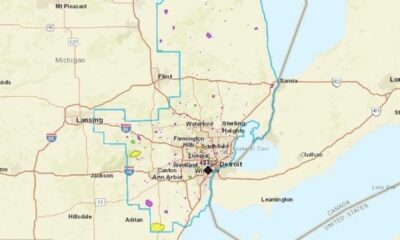News
FEMA Suspends Emergency Grants, Requires States to Certify Population Counts

Washington, D.C. — The Federal Emergency Management Agency (FEMA) has halted the release of emergency preparedness grants valued at hundreds of millions of dollars, requiring states to verify their population counts before accessing the funds, the agency confirmed on Tuesday.
FEMA’s new policy aims to address concerns that some states may be receiving inflated payments, as grant amounts are typically based on state populations. The Emergency Management Performance Grants, which exceeded $300 million last year, are designed to help local communities prepare for disasters. They cover expenses such as emergency management staff salaries, training, equipment, and public education.
As part of this updated protocol, states received notifications that they must submit a population certification by September 30. This documentation must confirm the methodology used to estimate population and ensure that individuals removed under U.S. immigration laws are excluded. FEMA stated it would lift the funding hold following a review and approval of the state’s documentation.
Historically, FEMA has relied on U.S. Census data to assess state populations for grant distributions. This demand for states to supply proof of their populations is considered unprecedented by several FEMA officials.
A FEMA spokesperson explained, “Recent population shifts, including deportations of illegal aliens, create a need for updated data to ensure equitable distribution.” The requirement was introduced shortly after a federal judge temporarily blocked the administration from redirecting FEMA grants away from certain Democratic-led states.
The FEMA representative asserted that the new certification rule applies to all states, regardless of recent court decisions. Nevertheless, the ongoing government shutdown, which has led to numerous FEMA employees being furloughed, may result in further delays in processing the applications.
For months, the Trump administration has threatened funding cuts to some states with sanctuary policies regarding immigration enforcement. On the same day as the new directive, a federal judge in Rhode Island issued an order preventing the administration from permanently shifting millions of dollars in preparedness funds away from 11 Democratic-led states and Washington, D.C.
According to FEMA, states have been informed they would receive less than half of the anticipated $460 million in homeland security funds. New York and Illinois alone have been affected, losing over $130 million collectively.
Critics, including plaintiffs in the Rhode Island case, have accused the administration of “taking money from its enemies,” referencing remarks from Homeland Security Secretary Kristi Noem that indicated states opposed to her policies should not receive federal funds.
Despite these tensions, funding allocations for several Democratic-led states increased for the upcoming year. Since President Trump took office, his administration has pledged to shift greater responsibility for disaster preparedness and recovery to the states, with the recent directive being another sudden change in an already uncertain federal support landscape.
The National Emergency Management Association (NEMA), which represents emergency management directors nationwide, expressed concern over continued delays in FEMA funding, warning these setbacks put communities at greater risk. “These funds are the backbone of local emergency management programs,” a NEMA spokesperson stated, emphasizing that timely access to financial resources is critical for effective disaster preparedness and response.
Additionally, FEMA has reduced the time frame for states to spend grant money from three years to one, requiring states to expedite their long-term planning efforts within a shorter timeframe. An additional application step has also been added to access awarded funds.












